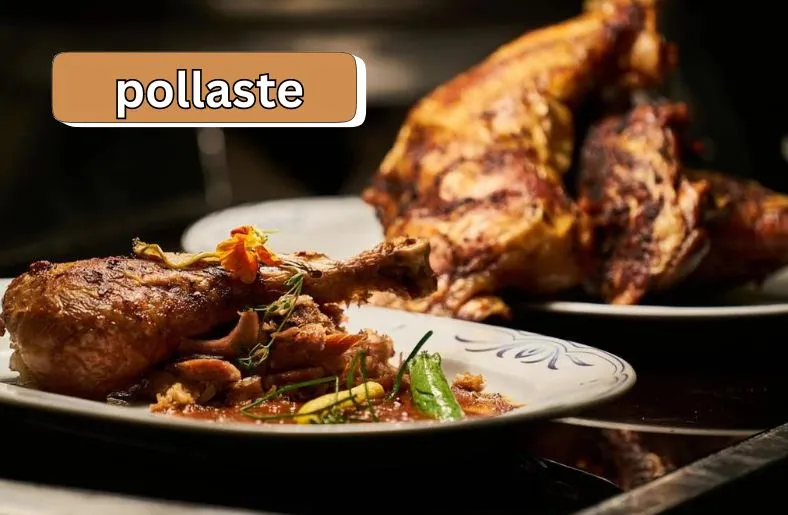Introduction of pollaste
Pollaste is a unique dish with a rich history and deep flavors. Originating in Europe, this delightful poultry dish brings a taste of tradition to your table. Pollaste is not just food; it’s a story of culinary art that spans generations. It combines juicy chicken with a blend of herbs and spices, creating a meal that’s both simple and sophisticated.
When you take a bite of Pollaste, you taste history. This dish has been loved for its tender texture and delicious flavors. It’s a great example of how traditional recipes can be both comforting and exciting.
In this blog post, we will explore what makes Pollaste special. From its origins to how you can cook it at home, we’ll uncover the secrets behind this classic dish. So, get ready to dive into the world of Pollaste and discover why it’s a timeless favorite.
The Origins of Pollaste
Pollaste has deep roots in European cuisine, especially from Estonia. This dish started in the countryside, where cooks used local ingredients. People needed meals that were hearty and satisfying, and Pollaste fit the bill perfectly.
Historically, Pollaste was made with simple, fresh ingredients. Estonian farmers and home cooks used herbs and spices to flavor their poultry. They would roast or grill the chicken, making it a flavorful and comforting meal. Over time, Pollaste’s popularity spread across Europe.
As it traveled, different regions added their own touches. Each area brought unique flavors and cooking methods, enriching the dish. This evolution helped Pollaste become a beloved dish in many countries. Today, Pollaste is enjoyed worldwide, from local family dinners to fancy restaurant menus.
The story of Pollaste shows how food can connect us to our past. It reflects the creativity of people who used what they had to make something delicious. Understanding its origins helps us appreciate the dish even more.
Ingredients and Preparation
Ingredients
To make Pollaste, you need a few key ingredients. First, choose fresh chicken. Chicken legs or thighs work best, as they stay juicy and tender. Next, gather olive oil, garlic, and lemon juice. These add flavor and moisture. For seasoning, use herbs like rosemary, thyme, and sage. They give Pollaste its unique taste. Add paprika, cumin, coriander, and chili powder for extra depth.
Preparation
Start by cleaning the chicken. Remove any excess fat and rinse it under cold water. Pat the chicken dry with paper towels. This step helps the marinade stick better.
Next, prepare the marinade. In a bowl, mix olive oil, minced garlic, and lemon juice. Add the herbs and spices. Stir well to combine. This mixture will coat the chicken and infuse it with flavor.
Place the chicken pieces in a large resealable bag or a bowl. Pour the marinade over the chicken. Make sure each piece is covered. Seal the bag or cover the bowl and place it in the refrigerator. Marinate for at least 4 hours, or overnight if possible. This helps the flavors soak in.
When ready to cook, preheat your oven or grill. If roasting, place the marinated chicken on a baking sheet. For grilling, place the chicken on the grill grates. Cook until the chicken reaches an internal temperature of 165°F (74°C). The skin should be crispy and golden brown.
After cooking, let the chicken rest for a few minutes. This allows the juices to redistribute, keeping the meat tender. Serve your Pollaste hot, garnished with fresh herbs or a squeeze of lemon if desired.
Cultural Significance and Traditions
Pollaste holds a special place in Estonian culture. It is more than just a meal; it’s a symbol of tradition and hospitality. Traditionally, Pollaste is enjoyed during family gatherings and festive occasions. The dish brings people together, celebrating shared moments and creating lasting memories.
In Estonia, food is a way to show love and respect. Pollaste is often served during important celebrations, like birthdays or holidays. The careful preparation and rich flavors reflect the effort and care put into making it. This makes Pollaste a cherished part of Estonian heritage.
Different regions have their own versions of Pollaste, each adding unique local ingredients and flavors. These variations show how Pollaste has adapted and evolved over time, yet still remains connected to its roots.
Sharing Pollaste with guests is a sign of warmth and generosity. It represents the Estonian value of making others feel welcome. Whether served at a family dinner or a special event, Pollaste is a proud representation of Estonian culinary traditions.
Modern Adaptations and Variations
Pollaste has evolved beyond its traditional roots, embracing modern twists and variations. Today, chefs around the world experiment with new ingredients and cooking methods, adding fresh excitement to this classic dish.
One popular adaptation involves using different proteins. While traditional Pollaste uses chicken, modern recipes might feature turkey or even plant-based alternatives. This allows more people to enjoy the dish, regardless of dietary preferences.
Another innovation is incorporating international flavors. Chefs mix in spices and herbs from different cuisines, creating unique flavor profiles. For instance, some recipes use Mexican spices, while others might include Asian ingredients. This fusion adds new dimensions to Pollaste, making it versatile and globally appealing.
Cooking methods have also expanded. Instead of just roasting or grilling, some modern versions use slow cookers or pressure cookers. These methods can enhance the dish’s flavor and texture, offering new ways to prepare Pollaste.
Despite these changes, the essence of Pollaste remains intact. It continues to be a hearty, flavorful dish that brings people together. Modern adaptations celebrate the dish’s rich history while adding contemporary touches, ensuring Pollaste stays relevant and exciting.
Nutritional Benefits of Pollaste
Pollaste is not only delicious but also packed with nutritional benefits. It is a great source of lean protein, which helps build and repair muscles. Protein is essential for growing bodies and maintaining a healthy weight.
The chicken in Pollaste provides important vitamins and minerals. For example, it contains vitamin B12, which supports brain health and energy levels. Iron in the chicken helps carry oxygen in the blood, keeping you energetic and strong.
Pollaste’s spices, like turmeric and garlic, have their own health benefits. Turmeric has anti-inflammatory properties, which can reduce inflammation in the body. Garlic is known to boost the immune system, helping to fight off illnesses.
Additionally, the yogurt used in Pollaste adds calcium, which is important for strong bones and teeth. This combination of protein, vitamins, and minerals makes it a balanced meal that supports overall health.
In short, it is more than just a tasty dish. It offers a range of nutrients that contribute to a healthy diet, making it a smart choice for anyone looking to enjoy good food while staying healthy.
Conclusion
Pollaste is more than just a dish; it’s a celebration of tradition, flavor, and innovation. From its humble origins in Estonia to modern adaptations around the world, it showcases the beauty of culinary evolution. This flavorful poultry dish brings people together, whether through its rich cultural significance or its versatile, contemporary versions. With its balance of taste and nutrition, it remains a cherished choice for meals that are both satisfying and healthful. As you explore this timeless recipe, you’ll find that it is a true reflection of how food can connect us to our past while embracing the future.





